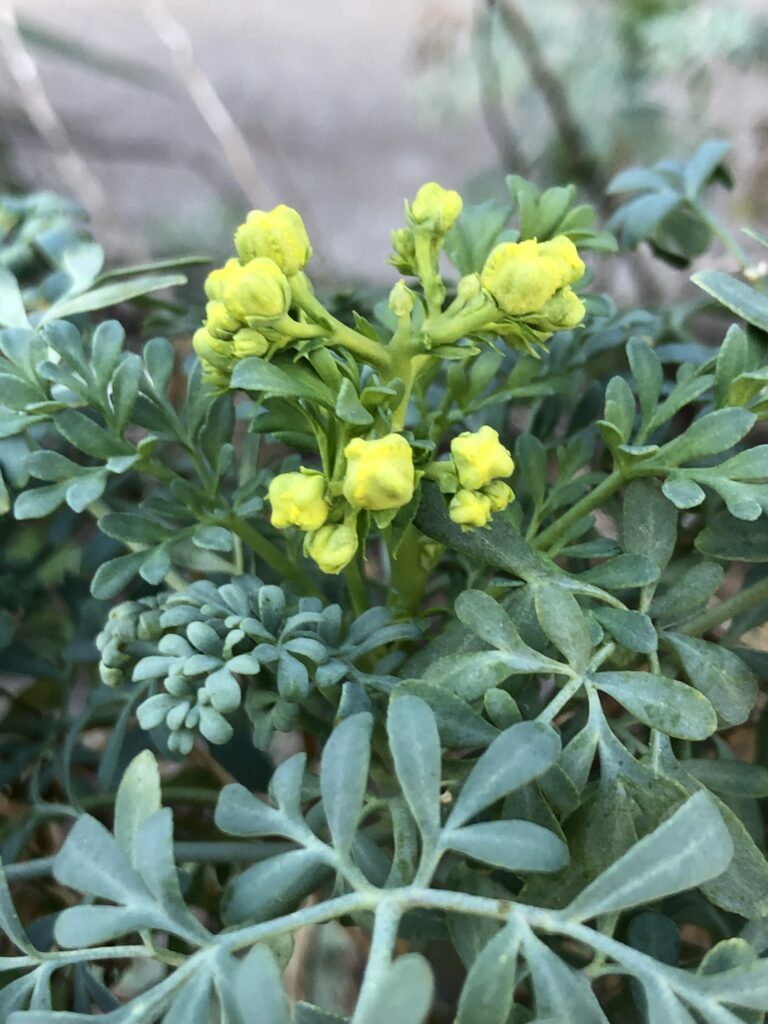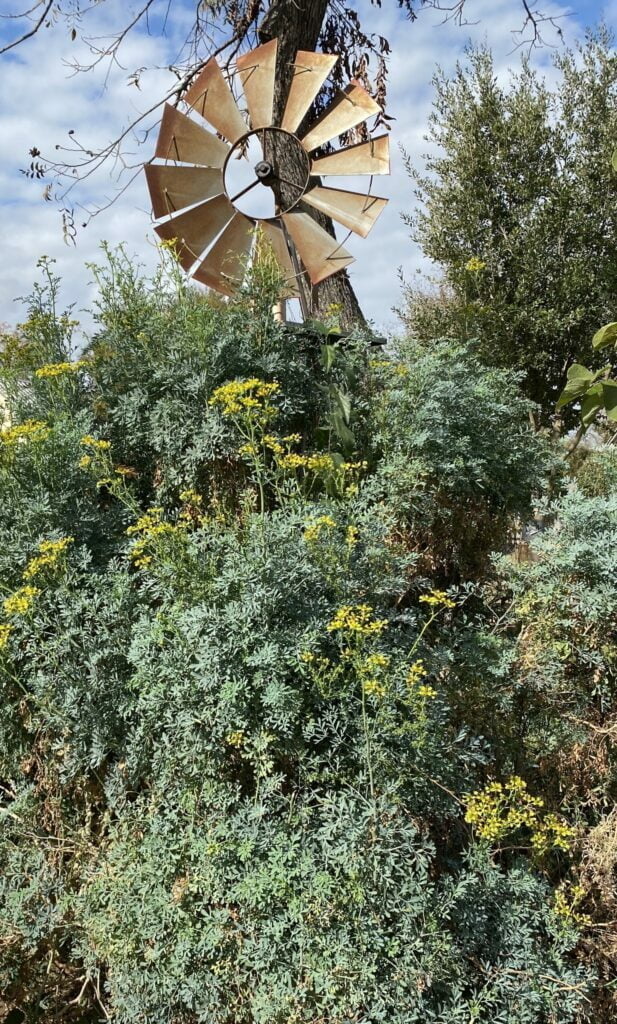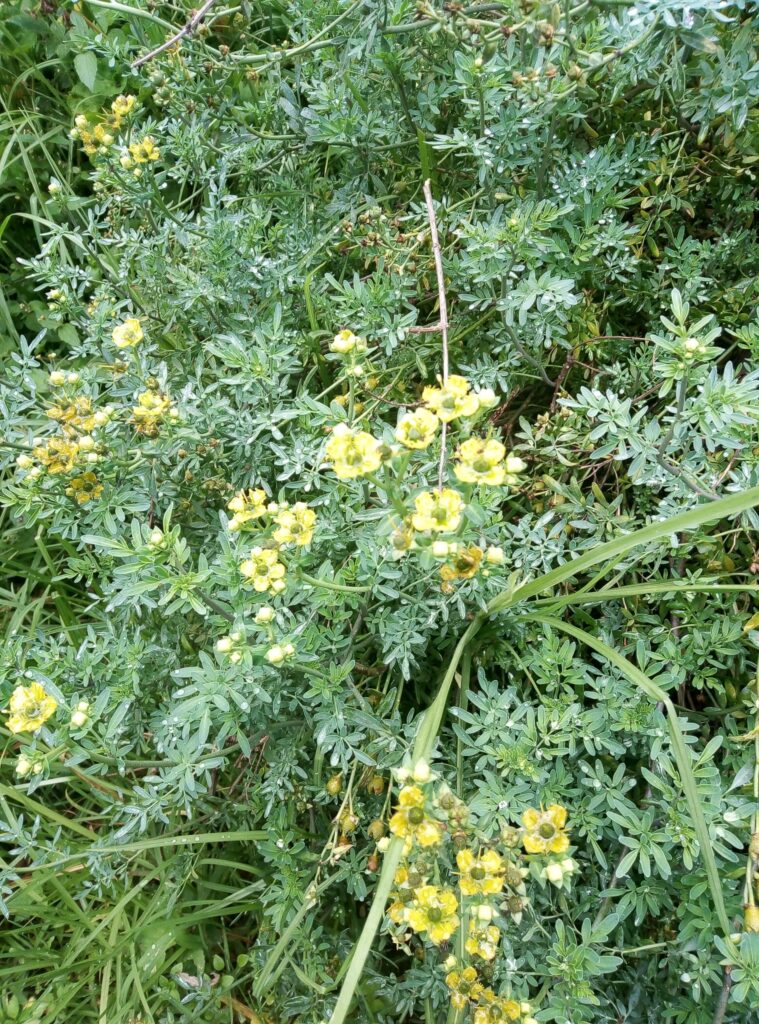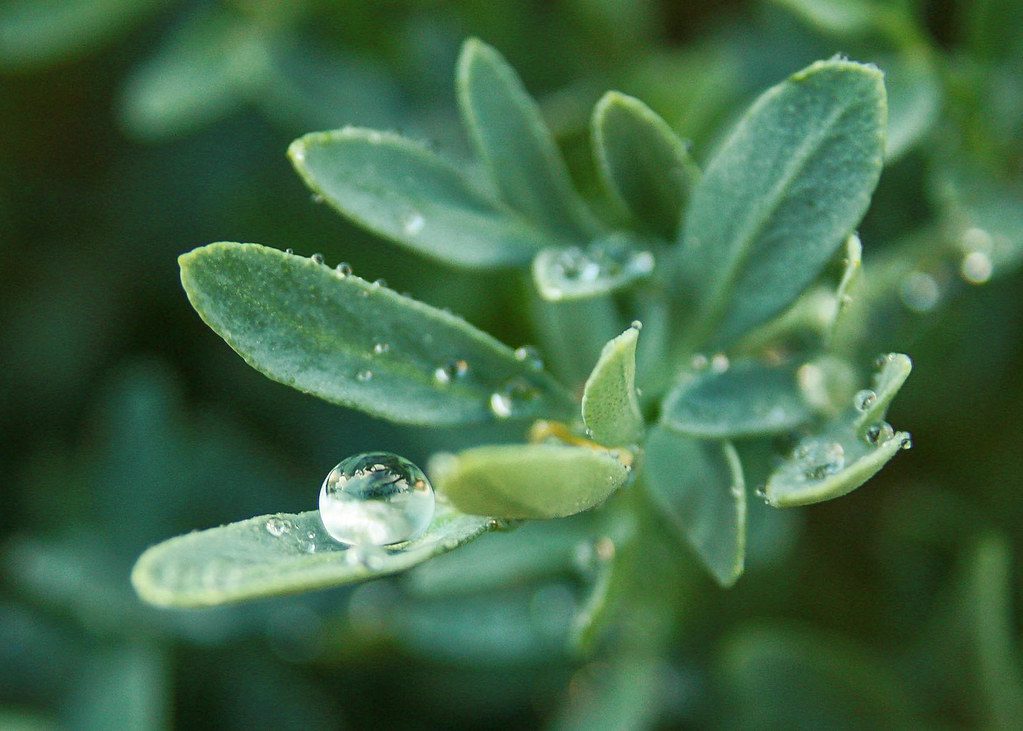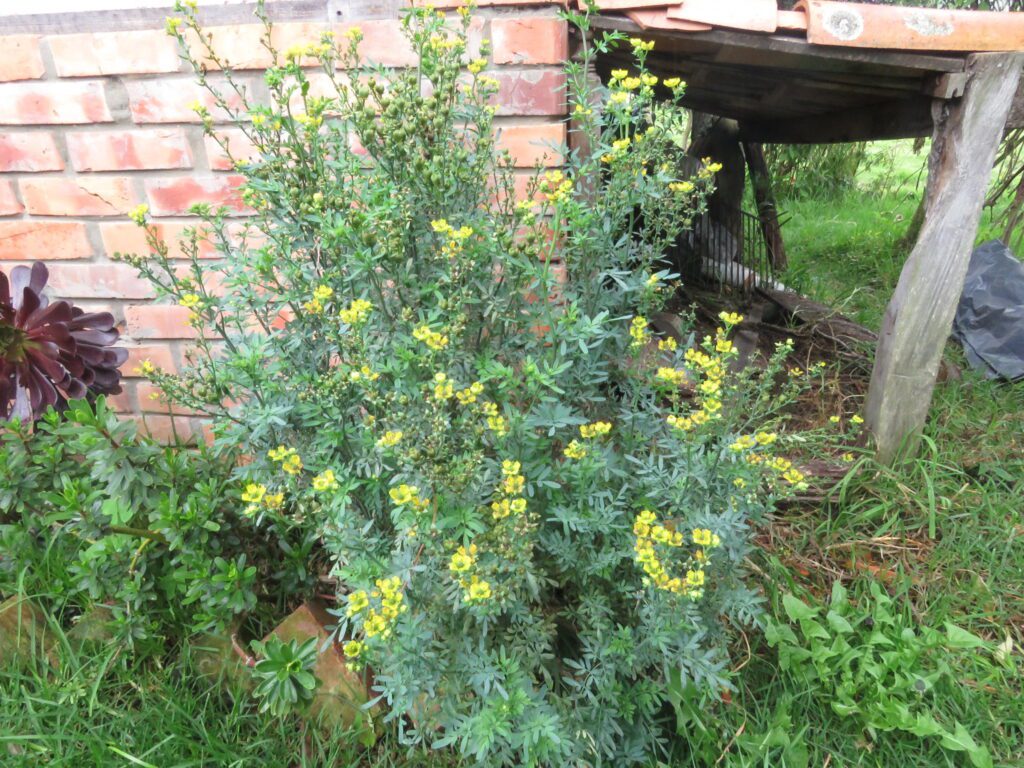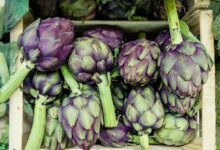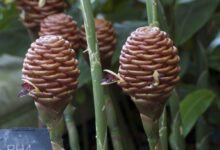Story of Day :
Contents
- 1 What is the Ruda Plant?
- 2 Superstitions Associated With the Ruda Plant
- 3 The Benefits of Using the Ruda Plant Medicinally
- 4
- 5 The Best Light Guide for Ruda Plant
- 6
- 7 Best Watering Guide for Ruda Plant
- 8
- 9 Getting Dirty: A Humorous Guide to Soil for Ruda Plants
- 10 Avoiding Common Soil Mistakes
- 11
- 12 Best Fertilizers for Ruda Plant
- 13
- 14 The Rue Herb: A Deliciously Funny Ingredient in Your Kitchen
- 15 Conclusion
- 16 The Bottom Line
What is the Ruda Plant?
The Ruda Plant, also known as Rue, is a herb that belongs to the Rutaceae family. It’s native to Southern Europe but can now be found in many parts of the world. The plant has been used for centuries for its medicinal properties and as an ingredient in many traditional dishes.
Short Answer: The Ruda plant is an herb that has been used for centuries both medicinally and in cooking.
Superstitions Associated With the Ruda Plant
While it may have medicinal benefits, there are some superstitions associated with the Ruda plant that might turn you off from using it.
- In some cultures, it’s believed to have protective powers against evil spirits and envy.
- Hanging a bundle of dried rue over your door was thought to protect against witches entering your home.
- In medieval times, it was thought that carrying rue could protect someone from contracting the plague or other diseases.
- In some cultures, rubbing fresh rue leaves on your forehead was thought to improve memory function or prevent headaches.
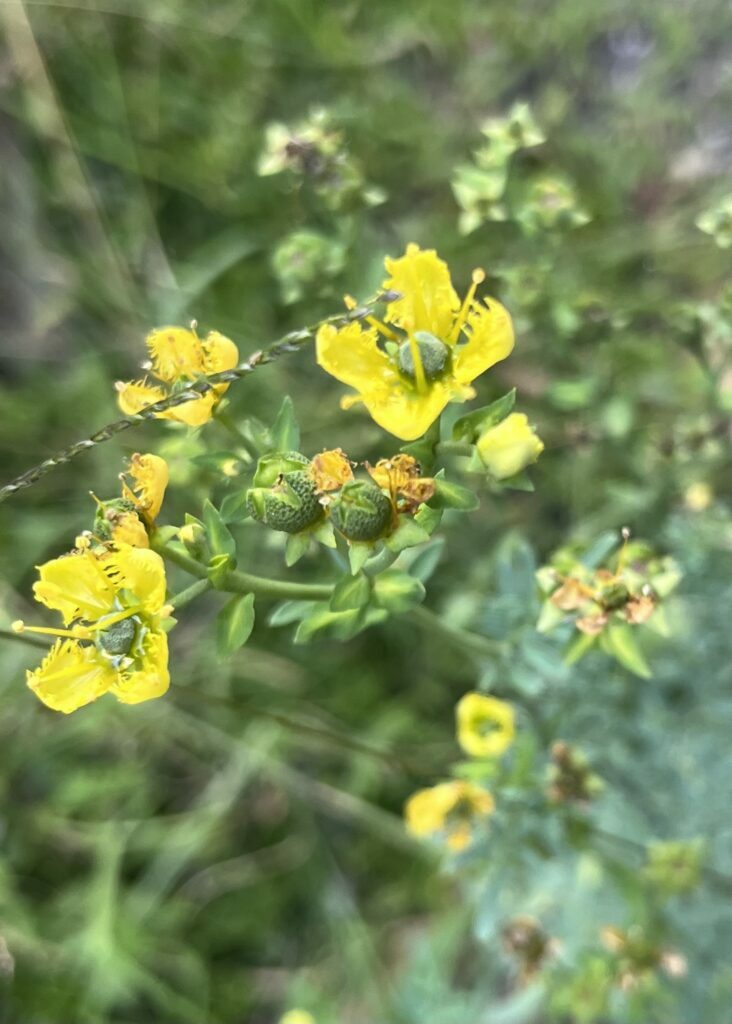
The Benefits of Using the Ruda Plant Medicinally
Are you tired of using conventional medicine for your ailments? Maybe it’s time to switch things up and try a natural alternative. Enter: the ruda plant. This herb has been used for centuries in traditional medicine to treat a variety of health issues, and its benefits are backed by scientific research. In this article, we’ll explore everything you need to know about this powerful plant.
Medicinal Properties of Ruda
The ruda plant possesses several medicinal properties that make it useful in treating various types of health conditions:
- Antimicrobial: The essential oils present in the ruda plant have antimicrobial properties that can help kill harmful bacteria and viruses.
- Analgesic: Ruda oil contains compounds like methylnonylketone which provide relief from pain caused due to muscle tension or headaches.
- Antispasmodic: Due to its high content of arborinine alkaloids, rudas have antispasmodic effects on our bodies.
- Vasodilatory Effects :The volatile components present in rue act on blood circulation helping promote vasodilation good for people living with hypertension as they help lower blood pressure levels
Uses of Ruda Plant
Here are some common uses of ruda plant:
- Treating Menstrual Cramps: Rue tea or tincture can help reduce the intensity and duration of menstrual cramps in women.
- Migraine Relief: Ruda oil has been found to provide relief from migraine pain, as well as headaches caused by sinus pressure or tension.
- Digestive Issues: The plant has been used for centuries to treat digestive ailments such as flatulence, constipation, and dyspepsia. Its antispasmodic properties help relax the gastrointestinal tract’s muscles improving their function thus reducing symptoms of gastrointestinal distress
- Fighting Respiratory Infections:rue oil helps fight respiratory infections like bronchitis, reduces inflammation in airways improving breathing. It also expels excess mucus reducing pulmonary congestion levels which enhances lung function
Possible Side Effects of Ruda Plant
Ruda may have some side effects when used incorrectly. Here are a few things you should keep in mind before using this herb medicinally:
- Skin Irritation :Skin contact with fresh rue plant may cause dermatitis due to its phototoxicity effects Users can develop phototoxic reactions after skin exposure to rue sap just like other citrus fruits allergies this happens when exposed areas lead become red and swollen on exposure to sunlight within days.
Cases Studies Supporting Ruda Use Medicinally
In a case study conducted by researchers at Assuit University on females experiencing menstrual pain two groups were observed one group was administered capsule containing 1000mg dried powder extract from sunny side of the rue and the other group was given nonsteroidal anti-inflammatory drugs with sedative effects NSAIDs. The results depicted that the rue plant capsule provided immediate relief from menstrual cramps with a prolong duration than those using NSAIDs
Another study carried out by Faculty of Medical Sciences at University of Delhi found that leaves of Rue plant contain important flavonoids which have anti-cancer properties They also demonstrated to inhibit cancer cell growth in various cancers such as leukemic, neuroblastoma.
In Conclusion
The ruda plant has been used for centuries for medical purposes, with an effectiveness in relieving symptoms caused by spasms, headaches and respiratory illness it is definitely a worthy consideration when looking into natural alternatives to synthetic medicines. However Like most medicinal plants ruda should be used appropriately under professional guidance due to its potent contents which may cause adverse side-effects if misused.
The Best Light Guide for Ruda Plant
Are you a fan of the Ruda plant and looking for tips to grow it successfully? Look no further! Here, we have compiled a humorous and informal guide filled with valuable insights to help you cultivate your very own Rudas.
Lightsaber Required? Understanding The Role Of Light In Growing Your Rudas
If there’s one thing Rudas are sensitive towards besides bad vibes, it’s lighting. Providing sufficient natural or artificial lights can make them flourish while inadequate lighting makes them sulky (just like us humans)!
Sunlight – Yes Please!
“I need sunshine in my life,” said every Ruda plant ever.
Providing adequate sunlight is the key ingredient in growing healthy Rudas. These sun-lovers require at least six hours of direct sunlight per day to flourish.
- Position your plants near a southern-facing window if they are kept indoors; or
- If grown outdoors, then ensure they are planted where it receives ample sunlight away from shade-giving trees or buildings.
A Case For Artificial Lighting
In many cases, natural light may not be abundant enough for the Ruda plant’s needs. However, you can always substitute it with artificial lighting. Here’s how:
- The best type of artificial light to use is fluorescent lighting. It mimics natural daylight and provides high-intensity luminosity needed for optimal growth;
- You could also go for LED grow lights that imitate various spectrums of light beneficial to specific stages of growth;
- The height and wattage requirements vary based on the size and number of plants you intend to grow, so make sure you understand their needs before purchasing a setup;
- If using traditional bulbs as an alternative source – avoid incandescent bulbs as they emit heat that destroys plant tissue (and we wouldn’t want our Rudas getting cooked!)
Toxic Lights That Kill The Vibe!
We all know how toxic negativity can be (right?) but did you know there are other toxic things? In this case – lights!
“I’m allergic to bad vibes and fluorescent lights!” said every Ruda ever…
Rudas tend to show negative effects when exposed continuously under harsh bright white (cool white) fluorescent lamps affecting their overall health substantially due to heavy Ultraviolet (UV) radiation. Additionally, they should also be kept away from any source of heat to avoid wilting and other undesirable effects.
In Conclusion
A properly-lit environment is crucial for a Ruda plant’s development and success, making it an essential aspect to consider when cultivating this intriguing shrub. Direct sunlight or artificial light sources can help them flourish if provided under correct conditions. So go ahead! With the tips presented here, you can be well on your way to becoming a Ruda pro!
Ruda plants require full sun exposure of around six hours per day; it’s best placed near windows facing towards the east or south at least one meter apart from other pots on window sill or balcony railings)
Best Watering Guide for Ruda Plant
Are you tired of watching your Ruda plant wilting away, no matter how much care and love you give it? Then my friend, the issue is with the way you water it. Just like any other plant, watering is crucial for Ruda plants to thrive.
The Importance of Watering for Growing Healthy Ruda Plants
Rudas prefer slightly moist soils but be careful not to overwater them. Overwatering can lead to root rot or even kill the entire plant!
- Watering deeply once a week during hot summers will help retain moisture without creating waterlogged soil conditions (that’s fancy slang for drowning your poor baby).
- If planting in well-draining soil: check soil moisture levels frequently as sandy soils tend dry out fast while loamy ones retain more moisture.
- Never let the soil completely dry out before watering again! If unsure about when next watering should occur; use a stick rule -about an inch deep- and if it comes clean then It’s time!
Determining When It’s Time To Water Your Plants
So, how do you know it’s time to water your Ruda plant?
- First, check the soil moisture by feeling a finger deep in the soil. If it’s dry, continue to the next step.
- The second way is by observing your plant; if its leaves are wilting or droopy- it’s thirsty!
How To Water Your Ruda Plant Correctly
- Gently pour lukewarm water on top of the soil avoiding any direct contact with plant foliage.
- Pour enough for water beads to form atop and slowly seep down into root zones over several hours through capillary action without leaving any standing puddles at all times
Additional Tips for successful watering:
- If planting Ruda in pots; Use containers large enough so that frequent watering isn’t necessary.
- If planting Ruda outdoors, using mulch coverings can help keep soils moist longer, which will stop it from drying out too quickly.
- Avoid watering the plant leaves to prevent any kind of fungal growth or diseases in your plant
- If you spot yellowed leaves around the base of plants; this can be a sign of overwatering heeding that they drain enough water runoff so as not to soak roots throughout dry seasons or prolonged drought conditions.
Bonus Tip 🌟
The time of day also matters when watering your Ruda plants: it’s best to do so earlier in the morning or later at evening hours, especially during hot summers to avoid scorched foliage!
Conclusion
Rudas are amazing herbs and should be part and parcel in every herbal garden. Watering may seem like a simple task but requires attention too! You have now learned how often & How much water you need for growing healthy Ruda plants – knowledge that was once known by only pro-practitioners. So go on and get those gardening gloves ready for an exciting herb-care journey ahead!
Getting Dirty: A Humorous Guide to Soil for Ruda Plants
Are you a proud owner of a Ruda plant? Maybe you’re thinking about adopting one, but have no idea how to care for it. Fear not my fellow green thumbs, because I am here to give you the ultimate guide on soil for Ruda plants! But be warned, things might get dirty.
The Basics
Before we dive into the nitty-gritty details of soil composition, let’s start with the basics. What is a Ruda plant anyway? It’s actually an evergreen shrub that belongs to the citrus family and can grow up to 5 feet tall. But what really makes this plant special is its medicinal properties. In fact, it has been used in traditional medicine for centuries as an anti-inflammatory agent and even as a natural insect repellent.
Now that we know what we’re dealing with, let’s talk about soil. The foundation of any healthy plant starts with good quality soil, and Ruda plants are no exception.
The Perfect Soil Composition
When it comes to finding the perfect soil composition for your Ruda plant- hold on- did someone say “perfect”? There’s no such thing as perfect! Just like people have their quirks (like my tendency to talk too much), different soils will also have their unique characteristics that make them more or less suitable for certain types of plants.
Now back on track; when selecting your potting mix take note of these useful tips:
-
- Rich in organic matter:
Choose soils rich in compost or peat moss which provide nutrients needed by your darling shrub.
-
- Friable texture:
This is just fancy lingo meaning light textured and crumbly soils. You want your soil to be easy to work with, not clumpy or compacted, because aeration is important for the root of your Ruda plant.
-
- Good drainage:
Keeping the plant roots too wet can cause rot, so choose soil that allows excess water to drain easily.
When searching for potting mixes (which is what you will need if you are keeping this shrub in a pot), look for products that contain organic matter such as compost or peat moss. Also, ensure it has good drainage properties and texture.
Avoiding Common Soil Mistakes
We have all made mistakes before – like accidentally sending a text meant for our significant other to our boss instead; and when it comes to taking care of plants, there are plenty of ways we can mess things up if we’re not careful. Here are some common errors people make when dealing with soil that you should avoid:
-
- Using garden soil:
This trap is easy fall into especially if you’re new at this gardening thing. Outdoor soils often lack the necessary nutrients required by indoor potted plants and they might even contain pests or diseases which can affect your darling shrub negatively.
-
- Not transplanting often enough:
If you see roots growing out from below the container do not wait too long before moving it into a bigger space! This affords enough room which allows wider root development making uptake of nutrients more possible
-
- No feeding routine :
The quality of soil only goes so far on its own; Incorporate fertilizers into your caring routine according to instructions given by manufacturers,
Caring For Your Ruda Plant
Your job does not end once everything gets planted in its spot.Practice these tips:
-
- Moderation in watering:
Aim to moisten the soil once every week. Over watering causes a damp condition that is prone to developing pests or fungal diseases.
-
- Place in good light:
Ensure your plant has enough sunlight but also avoid extreme temperatures. Note that too much direct sunlight can lead to leaf scorching.
The Final Dirt
While it’s true there are countless nuances when it comes to caring for any plant, including the Ruda plant we’ve focused on today, I hope this guide on soil composition and care for your darling shrub provides additional insight into what you should be looking out for when trying to provide optimum growing conditions. Remember no one achieves anything without getting their hands dirty- so go ahead and dive-in headfirst and give that green thumb a workout!
Best Fertilizers for Ruda Plant
If you’re a fan of gardening, then you know that plants require proper care to thrive. One of the essential aspects of nurturing your garden is choosing the right fertilizer. When it comes to Ruda plant, fertilization is crucial for their growth and overall health.
The Importance of Fertilizing Ruda Plant
Fertilizing your ruda plant can ensure its proper growth and development by providing essential nutrients necessary for its well-being.
- Nitrogen: Nitrogen plays a significant role in chlorophyll production required for photosynthesis.
- Phosphorus: Phosphorus aids root development, stem strength, flower formation as well as fruit production.
- Potassium: Potassium improves disease resistance against drought stress while enhancing nutrient uptake by plants’ roots system.
Bone Meal Fertilizer
Bone meal fertilizer consists of cooked animal bones which are grounded into powder form. This eco-friendly fertilizer releases nitrogen gradually over time making it ideal during the winter season when temperature drops below freezing point.
It needs some time before it is broken down and absorbed into the soil. Bone meal can be applied once or twice a year, with a general rule of thumb being two teaspoons per square foot.
Fish Emulsion Fertilizer
This organic fertilizer is made from fish remains, hence its name. Fish remains are blended and mixed with water then it is left to ferment for several weeks to create an organic slurry.
Fish emulsion fertilizer contains nitrogen as well as many trace elements such as calcium, magnesium, sulfur making it beneficial for all types of soils. It’s recommended that you apply fish emulsion fertilizers every six weeks during the growing season.
Compost Fertilizer
Compost is often referred to as “black gold” because it adds nutrients and improves soil structure that promotes root growth in plants.
Compost retains moisture by improving the soil texture while adding essential microorganisms such as bacteria and fungi that promote plant growth.
You can make compost at home using kitchen scraps or purchase bags of finished compost at your local nursery store. Spread evenly over your Ruda plant bed once or twice a year depending on the plant’s needs.
Tips For Successful Ruda Plant Growth
- Choose well-draining soils with pH levels ranging from 6 – 7 which provide good air circulation around roots.
- Rudas require plenty of sunlight to thrive so choose an area in your garden where they get at least six hours of direct sunlight daily.
- Ensure proper watering frequency by not overwatering them since this can cause root rotting while under-watering can slow down their growth rate leading to nutrient deficiency disorders.
In Conclusion
Fertilizing ruda plants requires understanding basic fertilization principles like nitrogen, potassium, and phosphorus. The best fertilizers for ruda plants include bone meal fertilizer, fish emulsion fertilizer, and compost fertilizer; all of which can improve soil conditions and promote healthy plant growth.
By following the tips mentioned above, you’ll be able to better nurture your Ruda plant enabling them to grow into vibrant and robust herbal shrubs in your garden! Remember that proper care is a prerequisite for their overall health; they will reward you with breathtaking beauty and health benefits beyond measure.
The Rue Herb: A Deliciously Funny Ingredient in Your Kitchen
Have you ever heard of the rue herb? If not, let me tell you, this is one fantastic ingredient that can take your dishes to a whole new level! Whether you’re cooking up a storm in the kitchen or simply adding flavor to your cocktails, rue herb has got you covered.
What is Rue Herb?
Rue herb (ruta graveolens) belongs to the family Rutaceae and is native to Southern Europe. It’s also referred to as “herb-of-grace,” and it has a strong and bitter taste. The plant itself grows up to two feet tall with small green leaves that are pinnate in shape.
The first documented use of rue dates back over 2000 years ago where it was predominantly used for medicinal purposes for treating various ailments ranging from rheumatism, menstrual cramps, epilepsy, and even against evil spirits!
The Culinary Use Of Rue
“Using too much of this bad boy herb can ruin an entire dish”
In today’s era though culinary uses have become more popular than medical ones. Many chefs are now using Rue in their dishes to add depth and complexity. The herb goes well with meat, fish, and vegetable dishes as well as cheeses such as feta cheese.
It’s also a crucial ingredient for flavoring the popular French liqueur “Chartreuse” which is known for its bright green color.
What Does Rue Herb Taste Like?
Rue herb has a pungent and bitter taste with hints of citrus. If you’re not careful when using rue, it can easily overpower other flavors in your dish, and using too much of this bad boy herb can ruin an entire dish.
The Health Benefits
Rue contains many antioxidants that help protect against several diseases including Alzheimer’s disease, diabetes, cancer among others. It can also be used to treat menstrual cramps and headaches by drinking it brewed into tea.
-
- Treats Menstrual Cramps And Headaches
- Fights Symptoms Of Depression And Anxiety
- Controls Blood Sugar Levels
Highest Source Of Glutathione- Antioxidant With Anti-cancer Properties </lim
The Risks Associated With Its Use?
“Pregnant women should avoid this powerful herb”
If you are planning on consuming rue on a regular basis or taking it medicinally, there are some risks associated with its use:
- Pregnant women should avoid this powerful herb because it can lead to miscarriage or premature birth if consumed in high quantities during pregnancy.
- Skin irritation – Direct contact with rue leaves or stems may cause skin irritation due to the presence of phototoxic compounds.
- Causes Mouth Ulcers- Excess consumption of rue can lead to the formation of ulcers in the mouth.
- High doses may cause vomiting, nausea and diarrhea problems – It’s highly recommended not to use too much rue herb for cooking or medicinal purposes. Small amounts are sufficient for flavoring food and drinks
Conclusion
Rue is a powerful herb with unique health properties that have been used since ancient times. While it has medical benefits, its culinary flavor is now becoming increasingly popular among chefs worldwide who want to explore new flavors and textures.
If you haven’t tried adding Rue herb to your recipes, now’s the best time for you! Just remember, as we always say at Chez Yousef’s Kitchen- Always start small because rue has an intense taste that could overpower other flavors, so it requires some skillful experimentation!
The Bottom Line
Despite its association with superstitions, the Ruda plant has many beneficial properties when it comes to cooking and medicinal purposes. However, it is important to use caution and care when using this herb due to potential side effects. As always, speak with your healthcare provider before trying any new supplements or herbs – even those as well-established as Rue.
While not proven conclusively by modern medicine which tends to look for evidence of peer reviewed scientific studies–the historical usage of the Ruda plant over centuries suggests that there must be some health benefits from this herb. It’s a unique addition in culinary situations too that isn’t interchangeable with other herbs in flavor profile so if you’re feeling adventurous next time you go to make pork milanese–consider finding some fresh rue leaves at your local market!
